

The Design Research Exchange (DRX) is a non-profit residency program for researchers hosted by HENN Architekten. The DRX, initiated by Moritz Fleischmann (HENN Research Director) and Martin Henn (HENN Design Director), provides an open platform to unite experts from various fields. By exploring architectural topics of shared interest, the DRX promotes a multi-disciplinary discussion between academics and professionals.
The DRX is envisioned as an environment for the advancement of fresh ideas and fertile ground for experimentation situated in-between academic research & architectural practice.
The program is examining and advancing architectural techniques and methods, testing new technologies and materials, and informing our future built environment. Throughout the DRX, invited experts present public lectures and provide critical feedback and guidance. While working in small teams on the appointed topic, researchers have opportunities to join ongoing discussions, meetings, workshops, and lectures while gaining insight into ongoing HENN projects.
In 2012, the DRX took place in Berlin at HENN StudioB from July 16th, 2012 through September 7th, 2012. Participants included four invited DRX Experts including, Prof. Dr. Gunter Henn (TU Dresden, HENN), Dr. Toni Kotnik (ETH Zurich), Prof. Dr. Konrad Polthier (FU Berlin), Prof. Dr. Patrick Teuffel and eight invited DRX Researchers with backgrounds in architecture, engineering, mathematics and computer programming. Together they formed a rich combination of skill sets, knowledge and mutual interests.
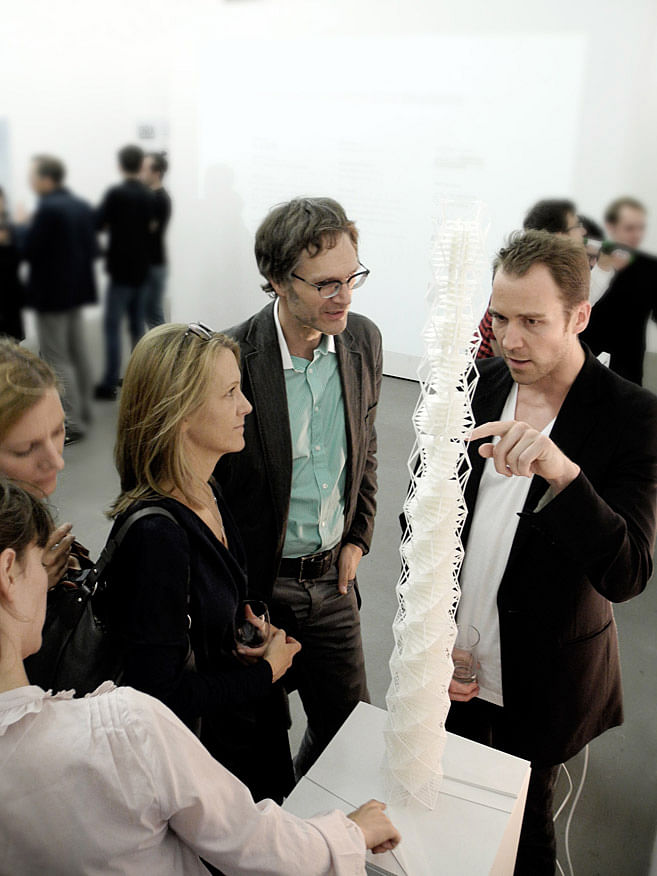
The topic of DRX 2012 was Minimal Surface Highrise Structures. Highrise buildings are extremely complex architectural typologies, as they combine multiple systems including program, structure, circulation, MEP and facade in one highly integrated arrangement. Sustainability and environmental performance within the urban context are key parameters in highrise design. The complexity of the task requires a cross-disciplinary, collaborative approach from the very early phases. This called for innovative and novel design solutions.
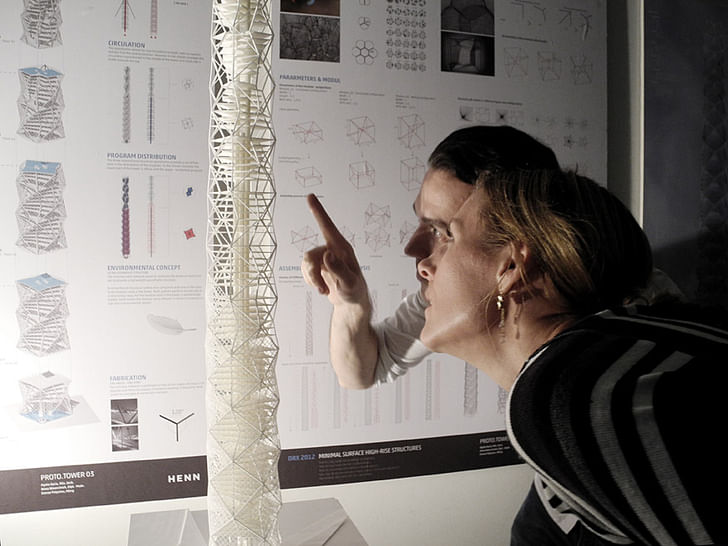
Minimal surfaces, as visible in various natural systems, have great potential for application in highrise building design due to their structural efficiency, overall area minimization, and efficient material distribution. All of these factors contribute to a sustainable architectural model and green building concept. Minimal surfaces may present intriguing potential as an effective alternative design solution for highrise structures. In general, structures derived from minimal surfaces have led to the design of various building typologies, such as tension-active roof structures and compression-active shells. But minimal surface structures remain virtually unexplored for applications in highrise design.
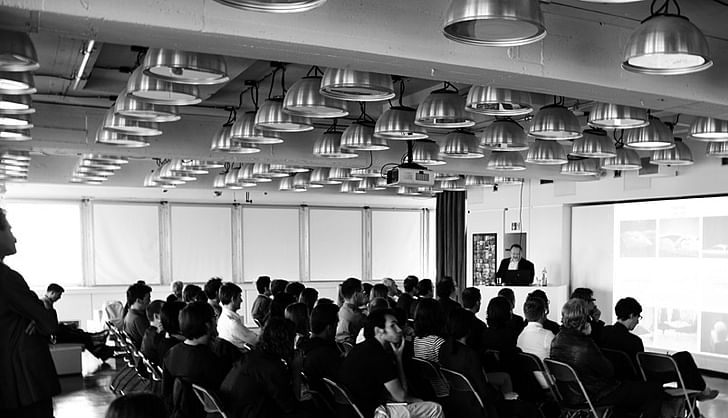
As part of the DRX 2012, three prototypic 500m (1,640ft) tall Highrise Structures were developed as so-called ProtoTowers.
Some of the key questions that guided the design process were:
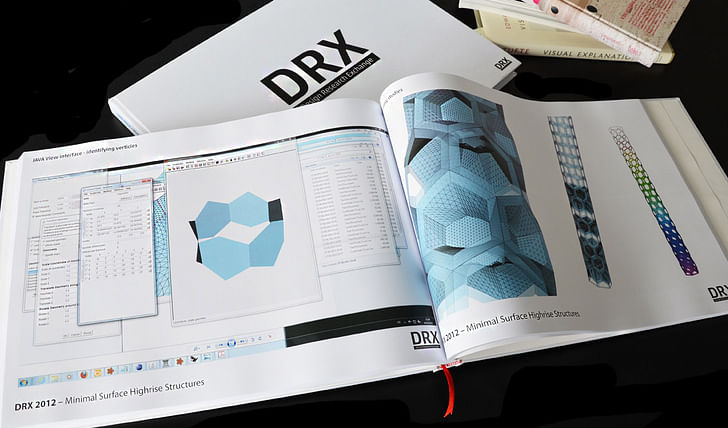
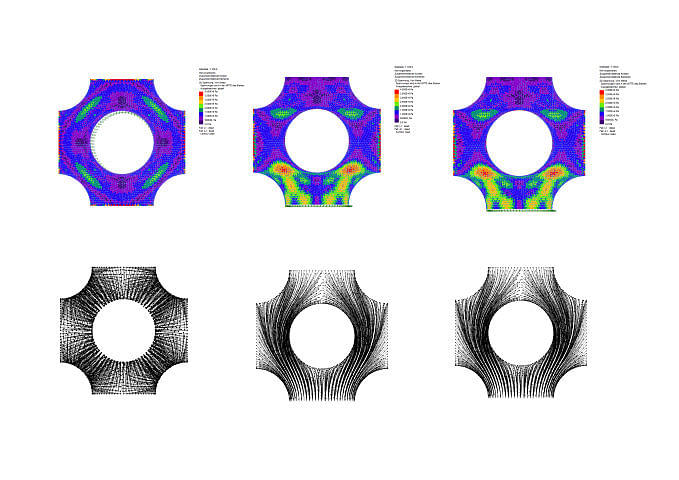
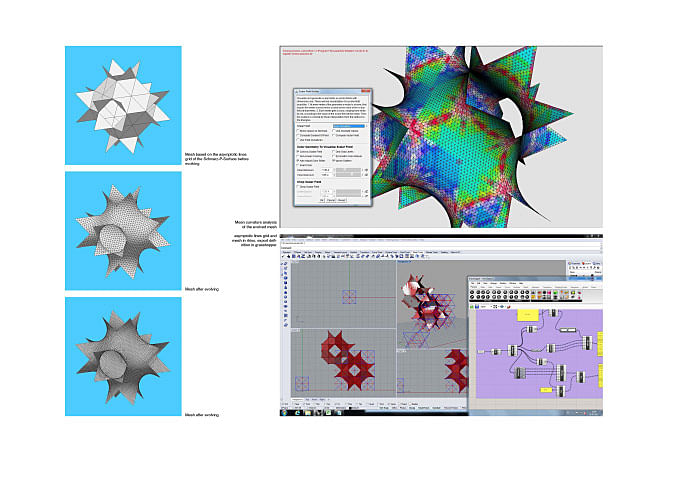

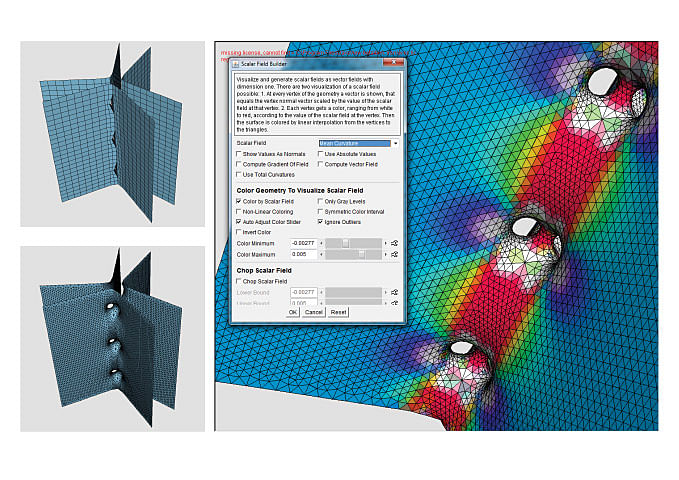
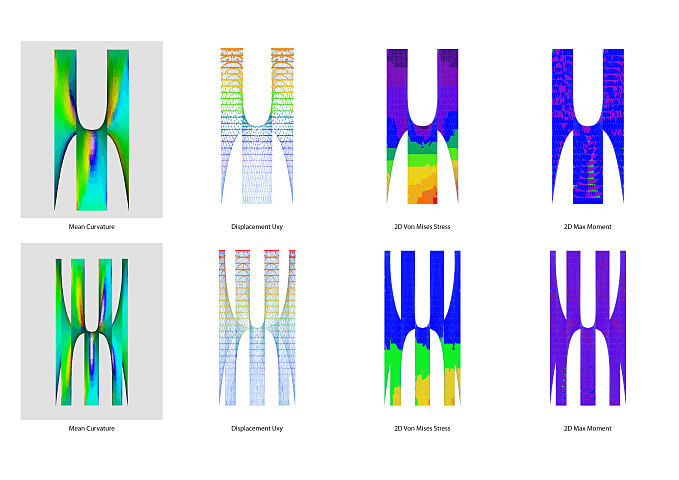

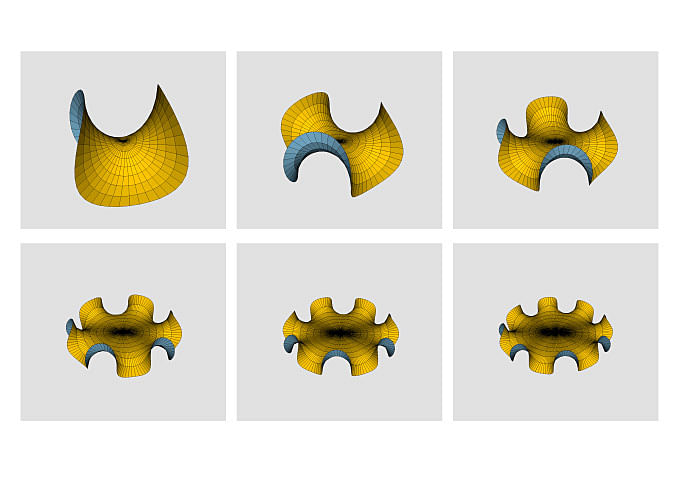





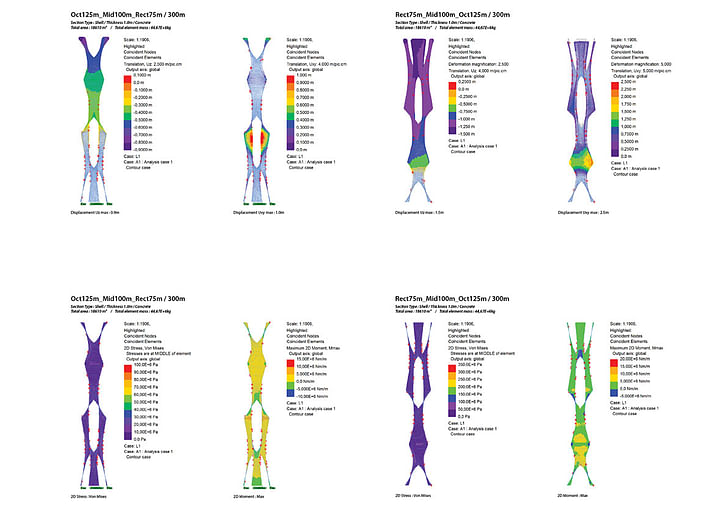
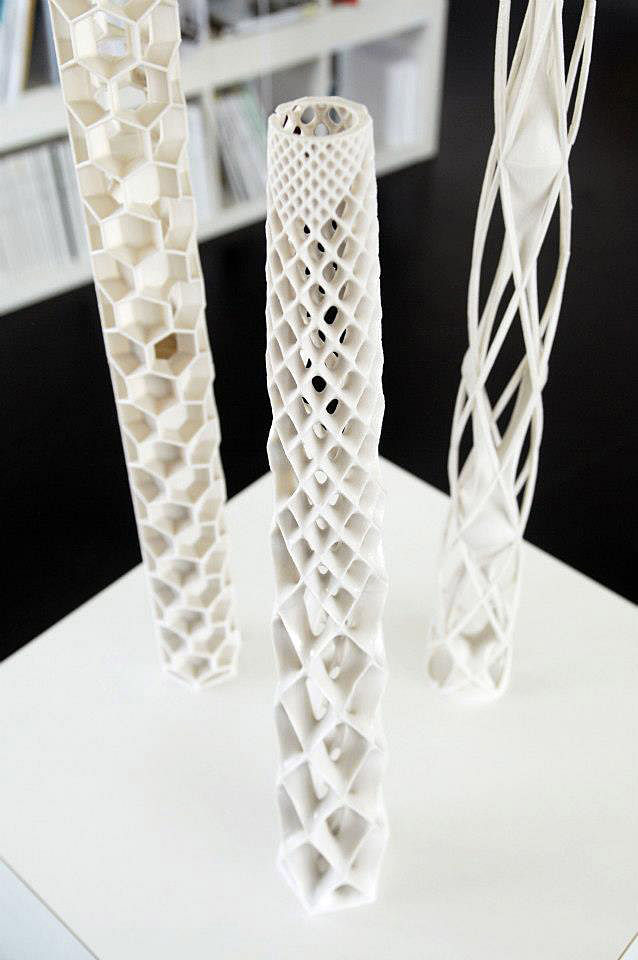
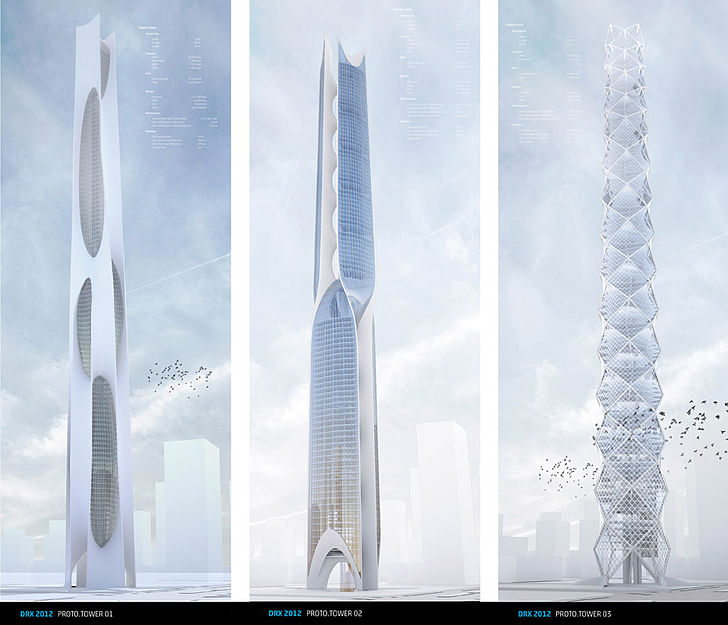
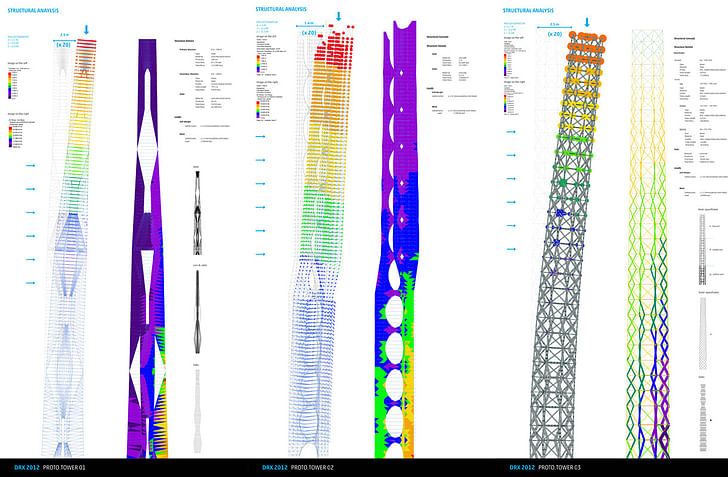

ProtoTower I -Modular Saddle Shell-Structure
This prototype is based on a concrete shell structure, developed by a vertical arrangement of modular saddle-shaped components. The shape of each component was computed as a tension-active system by spring-energy minimization similar to a soap-film model in the real world. Similar to these soap-films, the shape of each module depends largely on the geometry of a fixed boundary. In a following step, Calculations of boundary conditions, spatial qualities, building form and elements were reviewed against the results of structural analysis.
By changing these boundary conditions, a high degree of geometric variation and structural performance was achieved in each component. An extensive test of the structural capacities of individual modules as well as larger assemblies was carried out computationally to determine critical stress accumulations and identify regions for the introduction of openings in the shell. In a following step, slabs were introduced to serve as horizontal stiffeners, preventing the entire systems from buckling. The result is a very light shell structure of 2m maximum thickness at the bottom that functions structurally without the use of a central core.

The technique of “Form-finding” – the method of finding geometric form through the application of structural forces - is in no way a novel concept in the field of architecture. Largely recognized for his contribution to the Olympic Stadium in Munich, architect Frei Otto embodies the aesthetic and logistical principles of form-finding in design. The Italian engineer, Sergio Musmeci (1926-81) is also a central figure in the study of form-finding as seen in his viaduct constructed over the Basento River (1967-74) in Potenza. Traditionally in architecture, form-finding has largely been applied to horizontal structures such as large span roof constructions. Extensive research of previous form-finding structures was carried out and considered in the calculations and prototype development. This has led to the development of a vertical shell structure based on the same force inversion principle that guided the design of prominent compression structures such as the Sagrada Familia in Barcelona or Heinz Isler’s Shells in Switzerland.

ProtoTower II - Singly-Periodic Shell Structure
The project is the result of exploring the architectural potentials of periodic minimal surfaces. Here the surface is realized as a single concrete shell. The spatial and structural properties that result from different variations of this parameterized minimal surface are utilized for different architectural programs.
Mathematically generated minimal surfaces exhibit two interesting properties with regards to their translation into architectural systems. Primarily, the surface can be developed from a small “fundamental patch”. This element can be assembled into a continuous infinite surface. A trivial example is a small plane “patch” that could be assembled into an infinitely large plane.

Here, the double curvature of the surface behaves as a structural element and resists against different vertical and horizontal weight forces. Additionally, this type of minimal surface divides the adjacent space into two congruent spaces. After an extensive research of methods of modelling minimal surfaces a tool was developed to investigate the extent to which minimal surfaces can be altered to meet various programmatic requirements without compromising structural and functional integrity with regards to highrise structures.
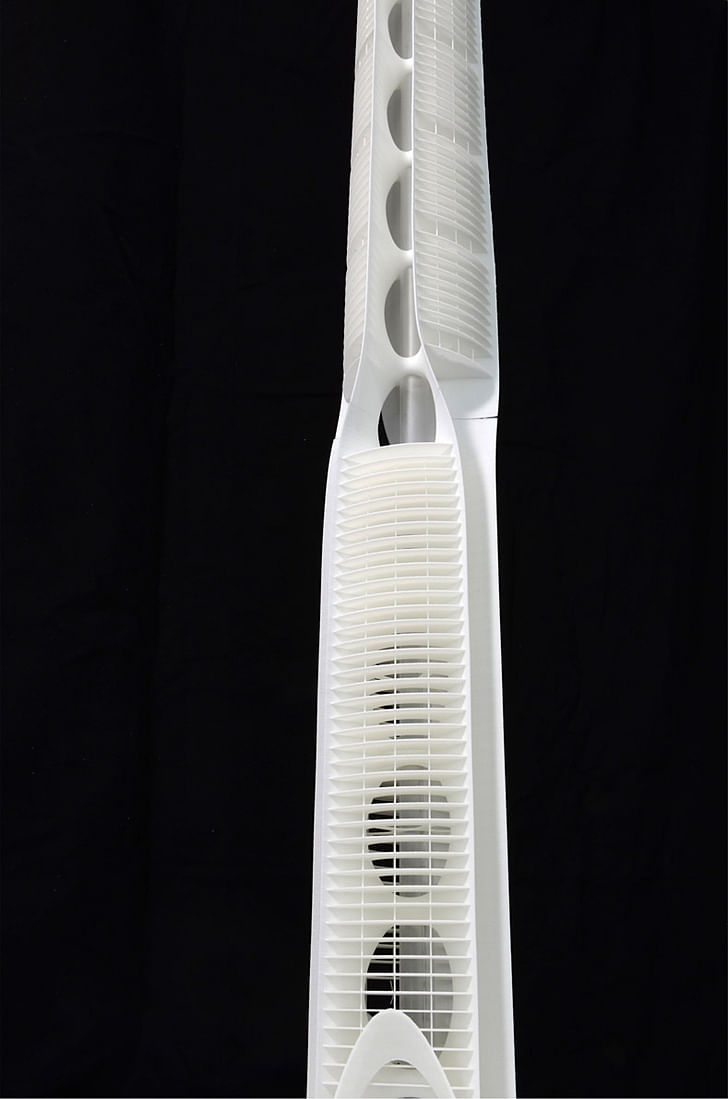
The main structural element of the tower is the concrete shell. The design features a double curvature surface that shapes the shell and interconnects at the center to support the structure and prevent buckling.
In the prototype model, the lower section of the structure holds large contiguous floor areas which function as office spaces. The shell provides natural ventilation and lighting through its inherent minimal holes. In the upper section, the structure transforms into a triple tower with residential / hotel use.

ProtoTower III - Ultra-lightweight Spaceframe Structure
The design concept of this ProtoTower was derived from the formations of soap film. In the physical world, Soap film consumes the least amount of surface area given a certain boundary. Here we investigated the formation of soap film under special boundary curves. Specifically the emergent formation of spatial minimal paths along the edges of multiple minimal surfaces formed the base for this research. These minimal paths can be considered as curve networks which consist of linear elements with a shortest overall length between all boundaries.
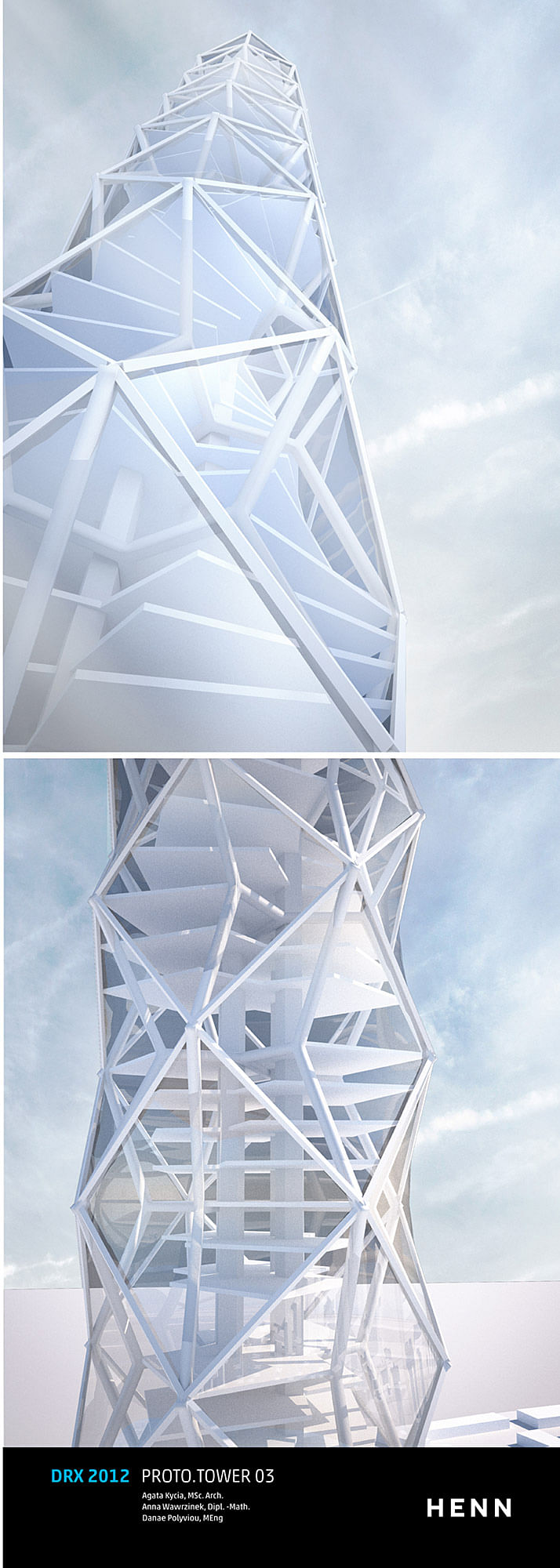
The main structure of the tower is a three-dimensional space frame, which was created using minimization methods and shortest path algorithms. Together with the concrete slabs, the emergent network forms a stiff system that can substitute conventional structural solutions. This stable structure allows the space frame to stand without a central core. This feature gives the tower maximum freedom when choosing an interior program as well as superior ventilation throughout.

Similar to foam bubble formations in nature, every node of the structure has three elements that meet at a 120 degree angle. This is a great advantage for the detailing, fabrication and assembly process, resulting in only one joint type for all connections.
The proposed system is a ultra-light structure design which allows for minimal material usage and therewith reducing the environmental impact significantly without compromising the structural integrity of more conservative solutions.

DRX 2012 CREDITS:
DRX 2012 TEAM
PRINCIPALS:
Moritz Fleischmann & Martin Henn (HENN)
EXPERTS:
Prof. Dr. Gunter Henn (TU Dresden, HENN)
Prof. Dr. Toni Kotnik (ETHZ, Uni Innsbruck)
Prof. Dr. Konrad Polthier (FU Berlin)
Prof. Dr. Patrick Teuffel (TU Eindhoven, Teuffel Engineering Consultants)
RESEARCHERS:
PROTOTOWER 01 - Hannes Lechner (Uni Innsbruck), Sunghyun Park (HENN) & Faniry Razafindrazaka (FU Berlin)
PROTOTOWER 02 - Michael Mühlhaus (TU München) & Nils Seifert (TU München)
PROTOTOWER 03 - Agata Kycia (HENN), Danae Polyviou (TEUFFEL Engineering Consultants) & Anna Wawrzinek (FU Berlin)
ADMINISTRATORS:
Nora Graw (HENN)
Sarah Roberts (HENN)
VISITING STAFF
WORKSHOPS:
Peter Debney (Oasys)
JURORS:
Tobias Nolte (Gehry Technologies), Mirko Becker (Städelschule Frankfurt), Alex Reddihough (ARUP), Prof.- Dr. Daniel Lordick (TU Berlin, TU Dresden), Eva Hinkers (ARUP)
SUPPORT
PARTNERS:
Technical University Dresden (TU Dresden), University of Technology Eindhoven (TUe), ETH Zürich, Freie Universität Berlin (FU Berlin), Innsbruck University (UIBK)
SPONSORS:
Oasys
Geometry Gym
MEDIA PARTNER:
Detail Research

7 Comments
cute girls
put a bird on it!
3-d spirograph
not really, cheesy 10 second metaphors are not a substitute for reading.
Don't believe you're lying eyes, enjoy our brochure.
wow..! more light fixtures than students. why?
if only we could dispel our lies and understand the joy of painting caves, etc. Then architecture could get some things done around here.
Block this user
Are you sure you want to block this user and hide all related comments throughout the site?
Archinect
This is your first comment on Archinect. Your comment will be visible once approved.